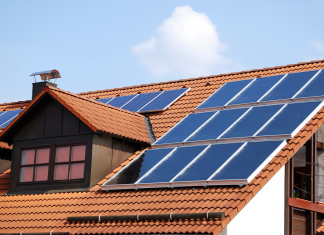You don’t realize it, but your life is under threat. And that too by your household goods.
An analysis conducted by the NY Department of Health narrates the impact of toxic chemicals on health. These chemicals may be present in objects lying around your house and can be dangerous enough to cause allergies and cancer.
It’s usually the old, useless, and outdated things that become the biggest nurturing grounds for harmful microbes and insects. So, if you identify these three attributes in any object lying around your home, trash it right now.
But if you are confused, we’ll help you kickstart your decluttering journey by sharing 5 household items you need to throw out.
To protect the things you value in your home, consider getting a policy that covers damages such as theft, fire and accidental damage.
Before we start, it’s a good idea to discuss self-storage. Self-storage companies offer affordable storage units on rent that can be used to store away household items. If you don’t want to get rid of an item entirely, you can store it away in a storage unit.
1) Newspapers and Magazines
Most of us hold back piles of newspapers and magazines in the hopes of recycling them later. You might hold them back because there’s a page of your interest or perhaps a picture of your favorite celebrity. At other times, you just can’t let go of the crisp pages that you never got the time to flip through.
If you see yourself in these situations, it’s a good idea to grab the pile of newspapers and magazines that you’ve hoarded and give them to your local recycling center. In case you don’t have one in your vicinity, give them to the local school’s library. You can also distribute them to local shops (that can use them to clean windows and wrap stuff) or sell them online.
But why do we care about newspapers and magazines so much? Well, that’s because they become home to termites, which are known to multiply rapidly. Although termites cannot directly transfer disease to the human body, they sting and bite, which can cause allergic reactions and asthma attacks in susceptible people.
2) Scented Candles
Traditional scented candles available in the market are made of paraffin wax. They burn to produce benzene and toluene, which are carcinogenic compounds that make you sick. Inhaling these compounds can damage the kidney, liver, and immune system (and may lead to cancer).
Also, scented candles contain stabilizers, color dyes, synthetic fragrances, and fixatives. Burning these can cause respiratory irritation for those with fragrance sensitivities and allergies.
So it’s best to buy organic non-toxic aromatherapy candles instead of traditional scented candles. They may be more expensive than the ordinary ones, but they’re safe.
But keep in mind that even non-toxic variants have a short life. Over time, they undergo chemical reactions, and their wick becomes poisonous. If you inhale these fumes, you may develop severe respiratory illnesses.
3) Toothbrush
Whether you’re keeping your old toothbrush alongside your current one or away in the store, it’s a bad deal. That’s because it’s an active breeding ground for harmful bacteria.
An average toothbrush harbors one million bacteria, which increase over time. So, there’s no way you can reuse it once it’s worn out (which is usually the case after three months of usage). If you reuse it, you’ll only be introducing more germs to your mouth instead of cleaning them out. Old and excessively used toothbrushes also grow mold.
So make sure you throw away all toothbrushes older than 3 months.
4) Plastic Food Containers
Ever wondered why plastic food containers become cloudy after a few months? Well, that’s because plastic breaks down over time. This leads to the release of chemicals called phthalates, which allegedly kill 91,000 to 107,000 adults annually.
Along with phthalates, several other harmful chemicals can leach out of plastic as well. They can mix with the food that you store in these containers. And when you ingest the contaminated food, you may develop digestive disorders, obesity, and even reduced fertility.
So, it’s best to dispose of plastic food containers after a few uses. Or even better, switch to glass containers.
5) Non-Stick Pans
This one may come as a surprise to you since the non-stick pans in your kitchen are not old, useless, or outdated.
But they come lined with a cancer-causing chemical called perfluorooctanoic acid (PFOA). When you cook in these pans, traces of PFOA chip off and mix with the food. This is why it’s best to use stainless steel or cast-iron cookware. You can pair these with non-stick sprays like olive oil.
The take-home lesson here is that you should always check out the chemical composition of things before buying them. Here’s a list of hazardous chemical substances that can help you choose the right items.
There are more concerns
Apart from polluting the environment and endangering your life, these household goods can also interfere with your productivity and mental health.
A study led by Princeton Neuroscience Institute concluded that too many objects in your sight can make it difficult for your brain to focus.
Another survey indicated that cluttered homes reduce productivity as an average person spends 2.5 days/year looking for lost stuff. Moreover, the National Soap & Detergent Association estimates that decluttering can reduce household work by 40%.
So, for the sake of your health and productivity, it’s best you get rid of unnecessary and dangerous household items as soon as you can.















